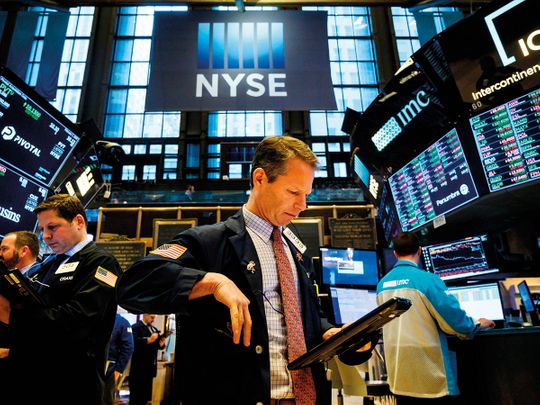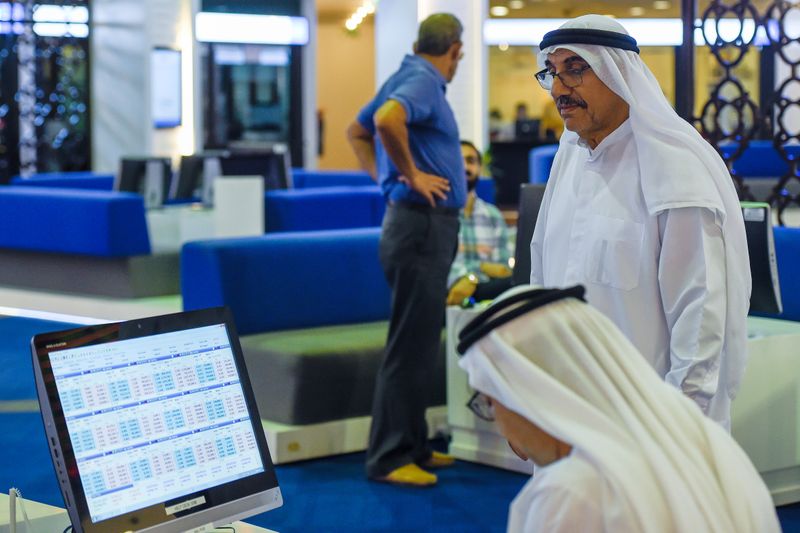
Dubai: Global stock markets may have ended the last few weeks in the red and although this gave reason for further caution among investors, analysts sounded upbeat about the sell-off being mostly over.
Wall Street stocks closed lower for a third consecutive week, with the key S&P 500 benchmark having lost nearly 9 per cent since touching a record high earlier this month, with losses mainly driven by the technology sector.
See more
- Photos: Egypt's blossoming trade in fragrant jasmine flowers
- COVID-19 lockdown sparks entrepreneurial spirit in Venezuela
- Billionaire car-part supplier aims to triple sales in five years
- Vanishing jobs and empty offices plague Britain's retailers
- Photos: Czech guitar maker born of necessity woos stars
But senior market analysts at lending giants Goldman Sachs, Wells Fargo and Deutsche Bank were upbeat the sell-off is past its worst. Goldman Sachs kept its end-of year S&P 500 target to a 3,600-point level by year end. The index, viewed widely as a global benchmark, currently stood at 3,300 points.
In the last few weeks, a wave of bearishness swept through markets worldwide, but with this shift in stance taken on by analysts, markets could be facing brighter days ahead.
Selling pressure to ease
With three weeks of decline, like other indices, the S&P 500 has been under pressure from technology stocks, many of which have seen their value hugely inflated this year, as cheap cash and a faster shift to online working and shopping during the pandemic fuelled a near-unprecedented buying spree.
As economic data points to an economy that is gradually recovering from the worst effects of the coronavirus crisis, investors are increasingly sensitive to anything that suggests this improvement could be derailed, or that a vaccine may not be forthcoming as quickly as they hope.
However, the Federal Reserve has indicated that, while it currently has no plans to inject any fresh cash into the financial system and that it will also be able to keep US interest rates near zero until at least 2023, it is confident that economic growth will continue to improve.
Fed move to play out more
“Going forward, the rising concern surrounding US Fed’s monetary policy becoming less effective as the pace of recovery is slowing down will continue to play out within the global equity markets,” said Iyad Abu Hweij, managing director at Allied Investment Partners.
Alongside its peer S&P 500 benchmark, the Nasdaq is around 12 per cent below record highs touched earlier this month. But there is reason for hope as both the indices are still up by 20 per cent and 3 per cent, respectively so far this year, regardless of the turbulence in the month so far.
Goldman Sachs saw the S&P 500 to be at 3,800 points by mid-2021, based on hopes that a vaccine will be widely distributed by the first quarter of 2021. Market watchers at Wells Fargo, while echoing the same optimism and flagging that the worst may have passed, warned of possibly more volatility ahead.
Meanwhile, Deutsche Bank said the put-call ratio, which measures the number of bearish contracts compared to bullish contracts, had normalized somewhat with the correction, after having fallen to the lower end of its 10-year range in recent weeks, reflecting extreme investor optimism.
UAE bourses begin week on shaky footing
Both the Dubai and Abu Dhabi benchmarks started the week on a shaky footing, even as investor sentiment in the energy-dependant region got a boost from soaring oil prices.
Dubai’s main index ended marginally lower at 0.02 per cent, after trading largely in the negative through the day – briefly dropping as much as 0.8 per cent.

Declines from lenders Emirates NBD Bank and Dubai Islamic Bank were cushioned by gains from Emaar Development and Emaar Properties.
However, the Abu Dhabi bourse edged up 0.8 per cent, with the country’s largest lender First Abu Dhabi Bank edging up 0.2 per cent.
In the Middle East region, sentiments continued to remain broadly positive during the week as four out of the seven regional indexes closed in green, supported by strong gains in oil prices and improving business activity.
Oil prices recorded a gain of 8.34 per cent during the week, supported by an unexpected drawdown in US oil inventories and Saudi Arabia’s efforts to push OPEC and its allies to comply with output quotas.
“For the MENA region, investors will continue to follow the trend in global markets and the developments in oil prices to accordingly position themselves in the markets,” Iyad Abu Hweij added.
Elsewhere, the Saudi Arabia stock market rose, helped by gains in National Petrochemical Company and Saudi Industrial Investment Group (SIIG) after the duo said they were in merger talks, while other Gulf markets were subdued in early trade.








